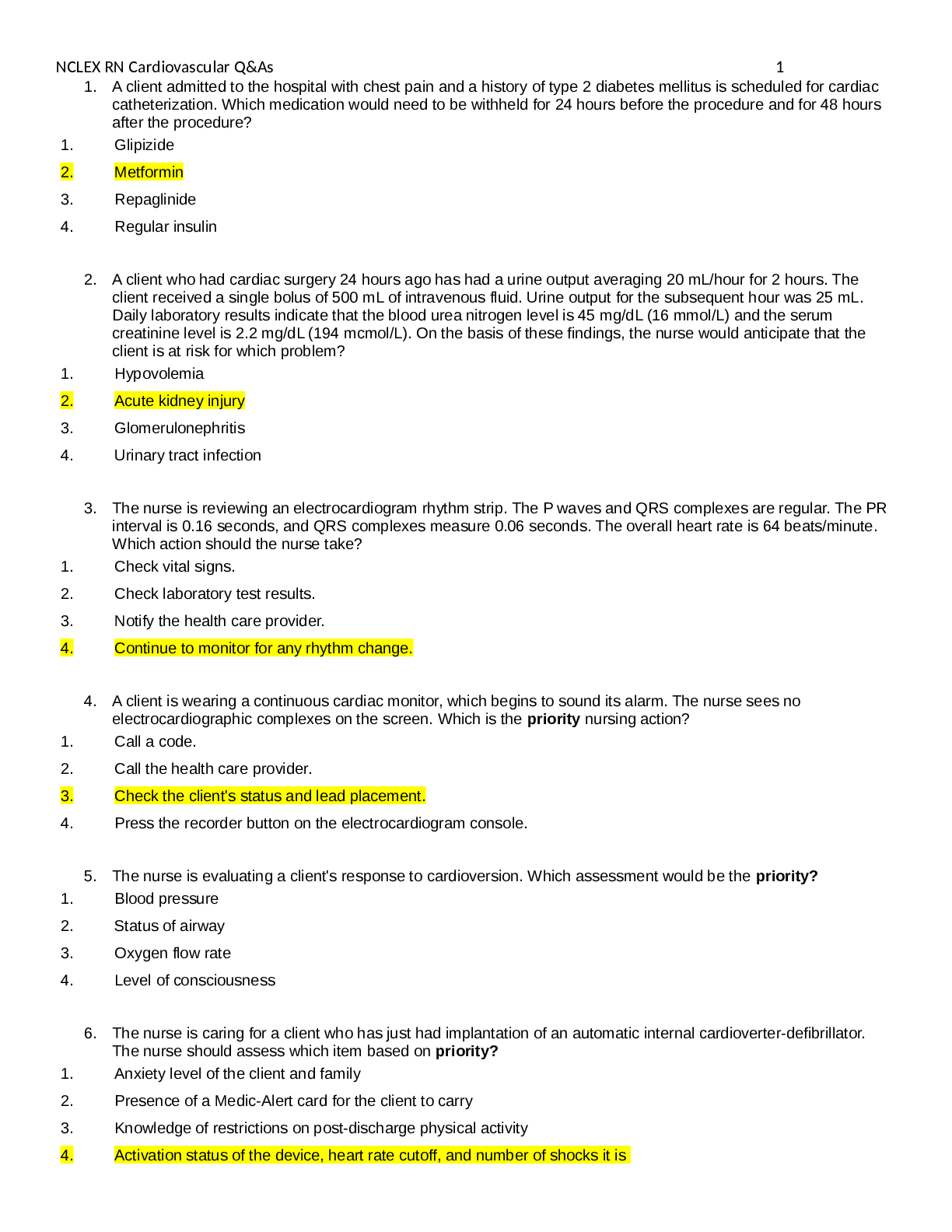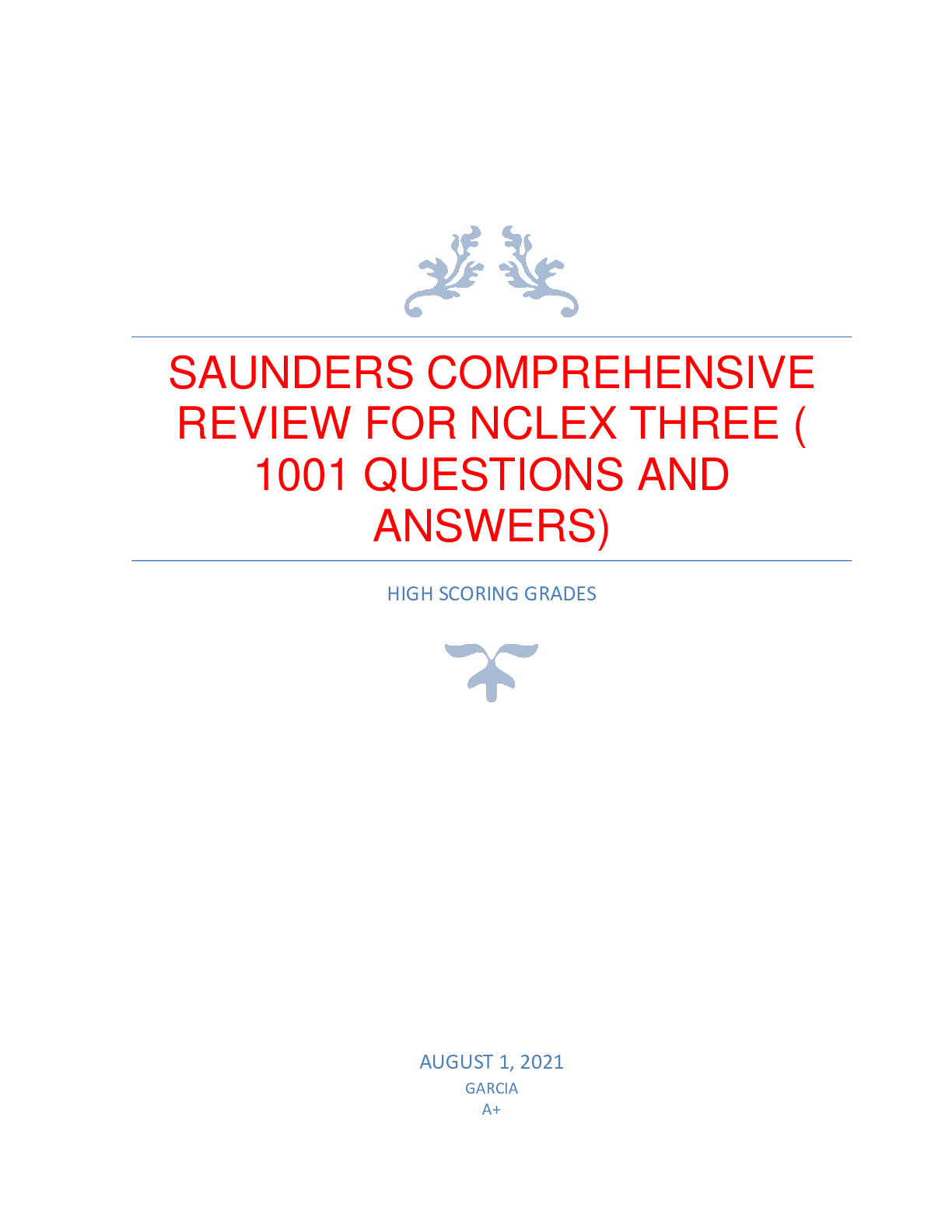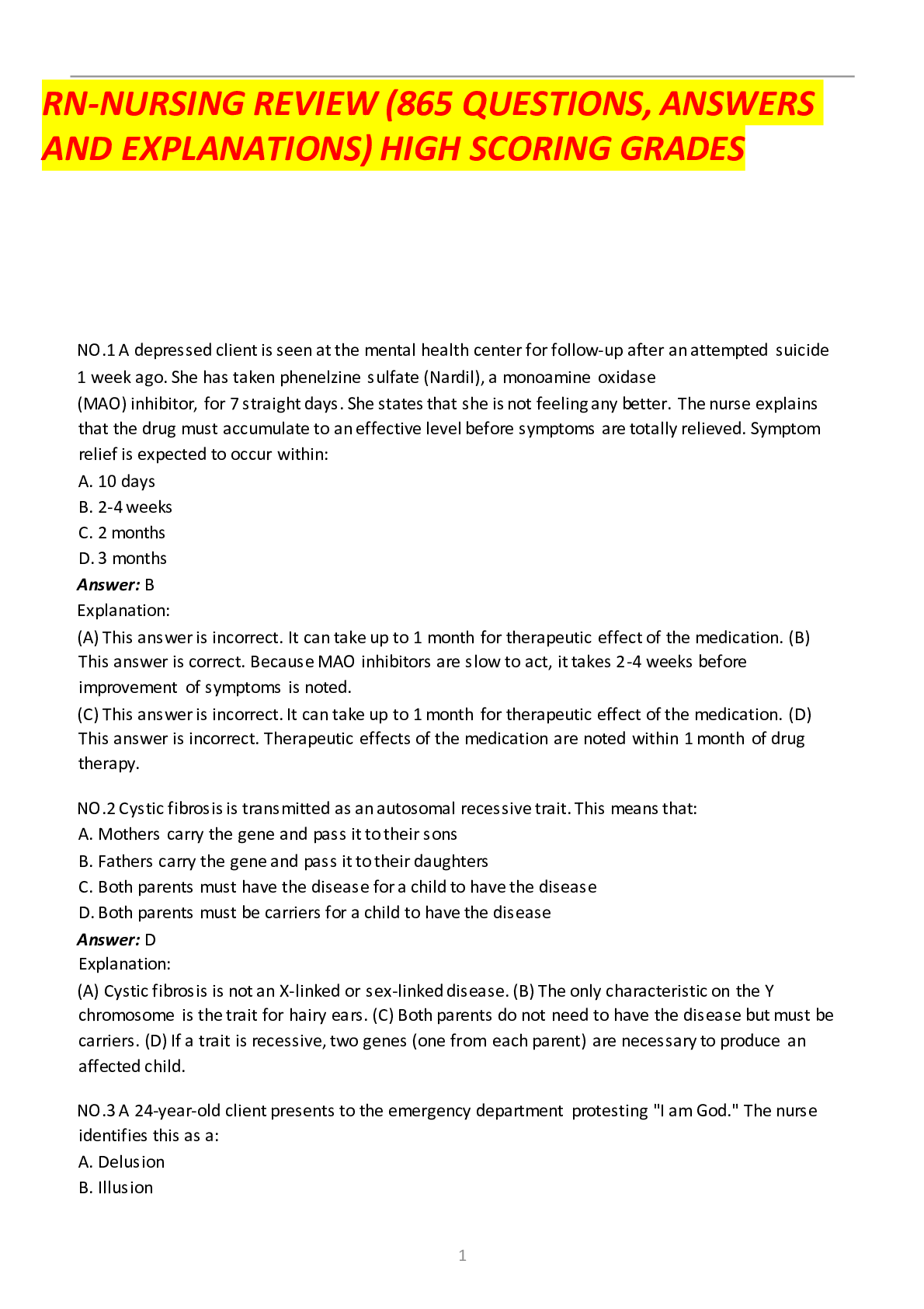NCLEX -RN Cardiovascular Problems of the Adult 40QClient 8th Ed.2021
Document Content and Description Below
1. A client admitted to the hospital with chest pain and a history of type 2 diabetes mellitus is scheduled for cardiac catheterization. Which medication would need to be withheld for 24 hours before... the procedure and for 48 hours after the procedure? 1. Glipizide 2. Metformin 3. Repaglinide 4. Regular insulin 2. A client who had cardiac surgery 24 hours ago has had a urine output averaging 20 mL/hour for 2 hours. The client received a single bolus of 500 mL of intravenous fluid. Urine output for the subsequent hour was 25 mL. Daily laboratory results indicate that the blood urea nitrogen level is 45 mg/dL (16 mmol/L) and the serum creatinine level is 2.2 mg/dL (194 mcmol/L). On the basis of these findings, the nurse would anticipate that the client is at risk for which problem? 1. Hypovolemia 2. Acute kidney injury 3. Glomerulonephritis 4. Urinary tract infection 3. The nurse is reviewing an electrocardiogram rhythm strip. The P waves and QRS complexes are regular. The PR interval is 0.16 seconds, and QRS complexes measure 0.06 seconds. The overall heart rate is 64 beats/minute. Which action should the nurse take? 1. Check vital signs. 2. Check laboratory test results. 3. Notify the health care provider. 4. Continue to monitor for any rhythm change. 4. A client is wearing a continuous cardiac monitor, which begins to sound its alarm. The nurse sees no electrocardiographic complexes on the screen. Which is the priority nursing action? 1. Call a code. 2. Call the health care provider. 3. Check the client's status and lead placement. 4. Press the recorder button on the electrocardiogram console. 5. The nurse is evaluating a client's response to cardioversion. Which assessment would be the priority? 1. Blood pressure 2. Status of airway 3. Oxygen flow rate 4. Level of consciousness 6. The nurse is caring for a client who has just had implantation of an automatic internal cardioverter-defibrillator. The nurse should assess which item based on priority? 1. Anxiety level of the client and family 2. Presence of a Medic-Alert card for the client to carry 3. Knowledge of restrictions on post-discharge physical activity 4. Activation status of the device, heart rate cutoff, and number of shocks it isNCLEX RN Cardiovascular Q&As 2 programmed to deliver 7. A client's electrocardiogram strip shows atrial and ventricular rates of 110 beats/minute. The PR interval is 0.14 seconds, the QRS complex measures 0.08 seconds, and the PP and RR intervals are regular. How should the nurse correctly interpret this rhythm? 1. Sinus tachycardia 2. Sinus bradycardia 3. Sinus dysrhythmia 4. Normal sinus rhythm [Show More]
Last updated: 2 years ago
Preview 1 out of 38 pages

Buy this document to get the full access instantly
Instant Download Access after purchase
Buy NowInstant download
We Accept:

Reviews( 0 )
$14.00
Can't find what you want? Try our AI powered Search
Document information
Connected school, study & course
About the document
Uploaded On
Apr 07, 2021
Number of pages
38
Written in
Additional information
This document has been written for:
Uploaded
Apr 07, 2021
Downloads
0
Views
66
















